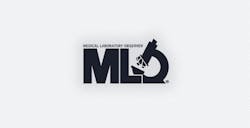When it is lab-inspection time
From The Lab Guy, Tim Dumas
The inspection process ensures that a lab is following
certain standards so test results used to diagnose and treat patients
are accurate. A two-week notice precedes the majority of lab
inspections, giving time for lab personnel to prepare (and to stress).
Unannounced inspections are an option, so it is best to stay prepared at
all times. Surveyors visit your lab to help you help your
patients, so make your life easier by trying to make their
job easier. Here are a few tips to assist an inspector with the job:
- Familiarize lab personnel with the inspection
process and, more importantly, with what the inspector is looking
for. CLIA makes this information available at
www.cms.hhs.gov/CLIA/03_Interpretive_Guidelines_for_Laboratories.asp .
If the guidelines are confusing or do not answer your questions,
call your state CLIA office to ask for assistance. If you are a COLA
lab, an inspection guide has been given to you. - Have necessary procedure manuals, personnel
folders, QA documents, QC charts, and proficiency-testing results
separated and organized. To avoid prolonging the process and to
appear prepared, appoint one person to answer an inspector's
questions or gather any information he requests. - Provide a clean, quiet area in which the
inspector can work. Avoid using a heavily trafficked, noisy area
(e.g., break room or kitchen). Bring all necessary documents to that
room and have those ready for the inspector's review. Make yourself
or other involved personnel available — take care not to “hover.” - Treat your inspector as if he were a guest in
your home. Not only is this is a good time to dust the place but
also to go through your lab inventory making sure that nothing is
expired, including blood-collection tubes, which — yes — have
expiration dates. Everything gets a good cleaning. - On the day the inspector arrives, greet him with
a smile, and introduce the inspector to all the laboratory's
inspection-engaged parties. This is a positive way to start the
process. You might ask if the inspector would like to meet the lab
director. - Bring the inspector to the nicely organized room
you have prepared with all pertinent lab information. Offer him
coffee or a cold beverage, and stay available to fulfill his
refreshment needs, as well as to check in on his progress
periodically. - For small to moderate size POLs, the inspection
should take only half a day. Ask for a brief summary of the
inspector's findings. A detailed evaluation should arrive within a
few weeks, listing each deficiency and the required information
needed to correct it. - After the inspector leaves, feel free to dance and cheer.
Tim “The Lab Guy” Dumas is a clinical laboratory scientist, manager, and consultant, and an accredited speaker through the National Speakers Association. He operates Tim Dumas Laboratory Consulting. Reach him through
www.timdumas.com , or for information on his professional workshops, use
www.advancepoc.com .
When OSHA comes to call
From the Safety Lady,Terry Jo Gile, MT(ASCP), MA Ed
A typical day in the lab begins — you come to work and
settle into your desk chair — then there is a knock on the door. You
answer only to find a person in the doorway who says, “Hi, I am from
OSHA, and I am here to help you.” Before you panic or make a wrong move,
consider the following points:
- Take the compliance officer directly to the CEO's
office for verification of credentials and review the complaint. The
name and title of the complainant will not be revealed in the
document. - Gather managers and supervisors of the involved
area(s) to attend the opening conference; take lots of notes. - Follow the compliance officer throughout the
walk-through and record any deficiencies identified. Make sure the
walk-through only covers area(s) cited in the complaint. - Provide personal protective equipment (lab coat,
gloves, and more) before entering the testing area; failure to do so
is an automatic violation with a potential fine up to $7,000. - Take photos of or videotape any photos or
video(s) taken by the compliance officer, which will help when the
time comes for abatement or fixing the citations. - If something cited can be fixed before the
compliance officer departs, then fix it. This is called a “quick
fix” and may still be cited — but no fine should be levied. - Do not volunteer any information — everything
said and done during this visit is “on the record.” - Provide employees time to speak privately with
the compliance officer who will give you a list of names or job
titles to be interviewed — one of these will be the complainant.
Most interviews will be 15 to 20 minutes for each of six to eight
employees selected. - Attend the closing conference and, again, take
lots of notes. - Ask questions about any citations.
- Clarify the requirements for abatement of the
citation. - When the citations arrive, post copies at the
site of the violation for three days or until these violations are
fixed. - Prepare position on each citation and back-up
documentation, as necessary. - Attorney involvement should occur before the
paperwork is submitted to OSHA, and he should assist with
negotiation of any fines. - Make sure all employees know the OSHA requirements and are able to
recite them when asked. This includes policies and procedures on
bloodborne pathogens, chemical hygiene, environmental monitoring (if
applicable), and injury prevention.
Best-selling author, professional speaker, and safety consultant Terry Jo Gile has helped thousands of laboratorians create safety-savvy laboratories. Her book,
Complete Guide to Laboratory Safety – Second Edition, is considered the consummate safety reference tool specific to clinical labs. Her new computer-based safety-education games reinforce OSHA requirements for the clinical lab.
Visit
www.safetylady.com .

